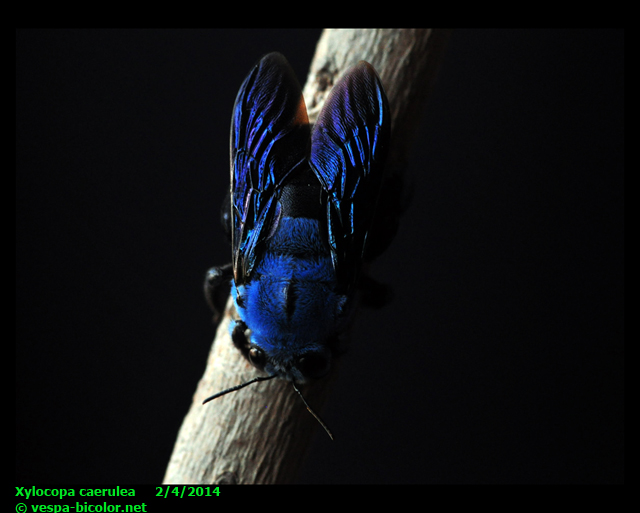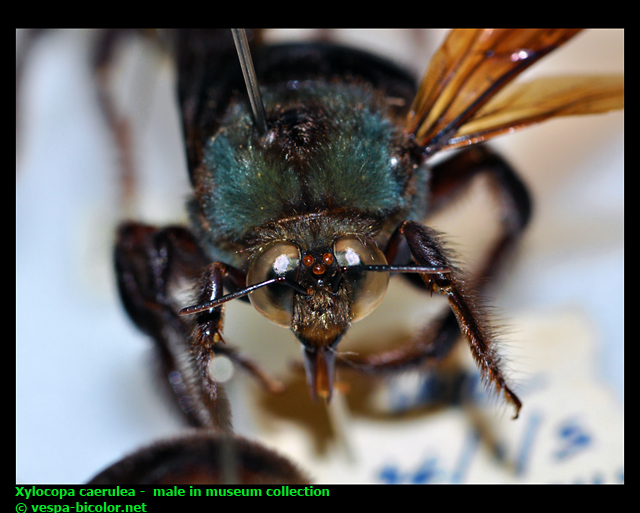
Common name(s): Carpenter bee
A large bee, usually 20 - 23mm in length. The female is mainly black, with her thorax covered with light blue hairs, making it almost fully blue except for a small black patch in the centre. The first abdominal segment and sides of the abdomen extending down to the second or third segments are also lined with similar but finer and more sparse blue hairs. I have never seen a male out in the wild myself, but there are some specimens in the Lee Kong Chian Natural History Museum, National University of Singapore. The male is dark brown, with proportionately bigger eyes compared to the female. The thorax is covered with a dense coating of teal-green hairs.



This species is apparently quite widely distributed across Southeast Asia, as well as India and parts of China (Yunnan, Guangxi, Hainan).
This beautiful carpenter bee is fairly widespread in areas with a reasonably good amount of at least secondary forest growth. It is not as common as Xylocopa latipes or Xylocopa aestuans, but neither is it rare. In Singapore, I have recorded it from Pulau Ubin, Sentosa, much of the Central Catchment Area, the Telok Blangah area and Kent Ridge. I have thus far seen two nests, one of which was in a tree stump and the other in the woody stem of a hanging vine inside the forest.
From my experience, this species can be seen visiting flowers such as Melastoma malabathricum (Singapore Rhododendron) and Adinandra dumosa (Tiup-tiup). It is most common in the morning (7 to 9 am) and evening (5 to 7 pm), but can also be seen in the afternoon. Another very similar but distinctly smaller species also found in Singapore is Xylocopa insularis. Some other similar species such as Xylocopa tumida are found elsewhere in Peninsular Malaysia and up to Yunnan, China. The female looks almost identical except for its much smaller size (15 - 17mm). I will post more photos and information on this species in the near future once I have more observations and photos. From my limited experience, I have never seen Xylocopa insularis during daylight hours. From observations at Kent Ridge Park, females appear from 6:20 pm and activity peaks at 7 pm before declining till 7:50 pm. However, I have, on two occasions, seen individuals flying through forest and foraging on tiup-tiup flowers at 9 - 10 pm!
Photo below copyright and courtesy of Melvyn Yeo. Taken in Lower Pierce Reservoir, Singapore.
